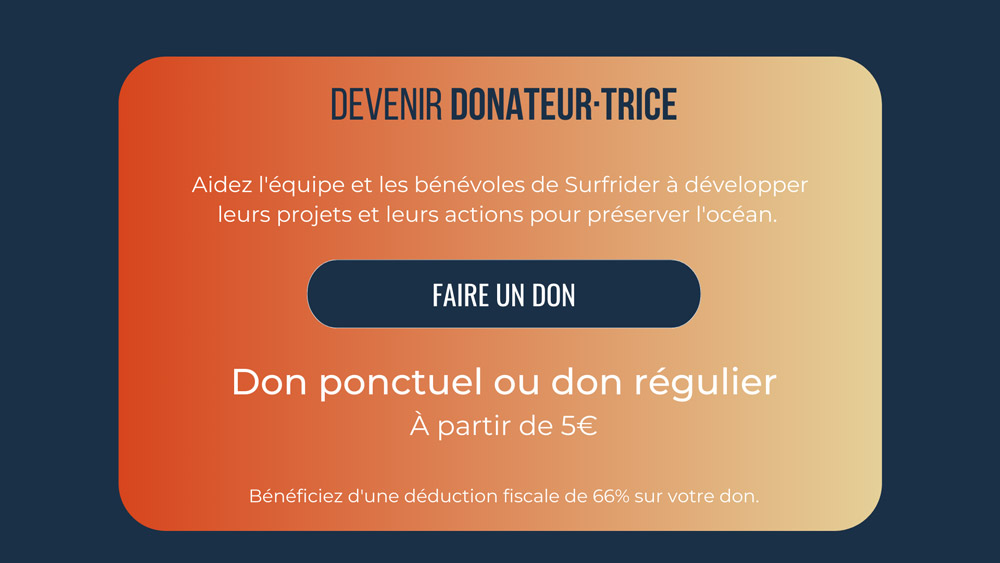We announced it on our social networks last week”: the long-awaited vote on the European Commission’s proposal to restrict intentionally added microplastics in cosmetic products did not take place on March 1st as initially planned.
REACH* Committee vote postponed again
We were eagerly waiting for this vote, that is crucial for the Ocean as it should allow manufacturers to finally be imposed truly binding measures regarding the use of microplastics in their cosmetic products.
The text at the heart of the discussions provides for a total ban on the use of microplastics intentionally added in many (too many!) cosmetic products. This ban is progressive, with a deadline of 6 years for leave-on and rinse-off products and 12 years for products in the make-up category.
These deadlines, obtained following pressure from part of the cosmetics industry lobbies, were already very generous. The postponement of the vote only results in wasting precious time that the Ocean and marine biodiversity unfortunately no longer have.
👉 In Europe, around 40,000 tonnes of microplastics from cosmetic products are reported to enter the environment each year, causing multiple negative environmental impacts.
Even if the European Commission’s proposal remains half-hearted (authorisation of biodegradable, liquid and soluble polymers, extension of the deadlines granted to the sectors concerned to comply with the ban), this text, if it is voted on soon, will be a great step forward in the fight against the scourge of microplastics for the Ocean.
———————————————————————————————-
Also read : Towards the end of microplastics added in our products?
———————————————————————————————-
What’s next?
Surfrider is not giving up and sincerely hopes that the European Commission’s proposal will be adopted at the next REACH* committee meeting.
But above all, we call on the brands still using microplastics to become aware of the urgency to change.
We expect them to commit, even if they are not legally obliged to, to a transition to considerably reduce the plastic pollution generated by their activities.
As the environmental devastation caused by microplastics have been highlighted many years ago, the concerned brands have already had sufficient time to consider and even master alternatives.
It is now time for them to stop pushing against the European Commission’s proposal and to take concrete action.
Questionable motives for the use of microplastics
Although dramatic for the environment and particularly for the Ocean, the use of microplastics by various brands is still firmly defended by some powerful cosmetics lobbies through disconcerting arguments.
Improving the texture of products or modifying their sensory properties (the famous “velvet” touch, the magical “non-greasy” effect, etc.) are reasons very often given by brands to justify the use of microplastics. Those arguments hide from consumers the real reason for their use: they are very cheap and much easier to work with (smell, colour etc.) than so-called “natural” products. Much more economical, therefore.
Microplastics, present in 90% of cosmetic products
As we explained in our articles on the “Beat the Microbead” and “Bad Cosmetics” campaigns, microplastics are present in the vast majority of everyday cosmetic products. Even if we don’t see or smell them.
These plastic particles smaller than 5 mm, invisible to the naked eye, are deliberately used by many manufacturers.
They are found in almost 9 out of 10 of the top 10 cosmetic brands (according to a study by Plastic Soup Foundation).
Deodorant, shower gel, shaving foam, toothpaste, care products for the little ones (especially baby creams) but also eye shadow, lipstick or lip balm or nail polish, microplastics are everywhere.
While some of them only spend a short time on our skin and/or hair, others, in direct contact with the mucous membranes (particularly vulnerable areas such as the eyes, lips, etc.) represent a direct risk to human health, as more and more studies tend to prove.
👉 13% of plastic residues found in the Ocean are micro or nano plastics.
In addition to the worrying aspect of their consequences for human health, microplastics persist for hundreds of years in the environment and particularly in the Ocean. Their impact is therefore disastrous, especially on marine biodiversity, which is particularly affected by this invisible yet devastating pollution.
Cosmetic brands committed to “0 microplastic”
Although the majority of the cosmetics industry and its powerful lobbies keep repeating that the use of plastic micro-particles is essential and unavoidable, more and more manufacturers of skincare and make-up products are proving otherwise.
Brands such as Weleda, Laboratoire Léa Nature, Inika and Naïf, aware and concerned about the risks posed by microplastics for the environment and human health, are developing wide ranges of products using natural alternatives.
Many of these products are directly available on the Internet, and some have even found their way into the beauty sections of supermarkets and hypermarkets in several European countries, making them much more accessible.
These brands, also firmly committed to the fight against the use of microplastics, have sent a letter to the REACH Committee urging it to take action and demand firm and decisive legislation on the banning of microplastics.
Let’s go for microplastic-free products
So, we’ve come to the point where you, dear reader, are asking yourself: how do we spot these famous microparticles in our cosmetic products so that we no longer coat our skin with plastic and consume products that are better for the environment
Unfortunately, most of the scientific names used by the brands on the back of our tubes or bottles are rather obscure for the final consumer. It is therefore relatively difficult to spot the problematic ingredients in the list of components of a lipstick or a deodorant for example.
Some of the most commonly used microplastics can however be easily recognised. These are the following:
– Polyethylene & Polypropylene glycol
Polyurethane (PU)
– Les silicones (Dimethicone, Cyclopentasiloxane…)
– Polymethyl methacrylate (PMMA)
– Polyamide (Nylon)
– Polyacrylique – Acrylate (Acrylates Copolymer etc)
– etc.
The complete list of microplastics likely to be added to cosmetic products and representing a real threat to the environment and human health contains no less than 550 components.
It is therefore difficult to find one’s way around … unless of course you download the 📱 Beat The Microbead application!
This application, developed by Plastic Soup Foundation, allows you to identify the presence of microplastics in cosmetic products by simply scanning the label of the questionable product.
Each of our individual actions can have a positive impact 💪 and accelerate the awareness of the biggest cosmetic groups, making them face their responsibilities and invite them to renounce the use of microplastics and to opt for alternative solutions as soon as possible!

